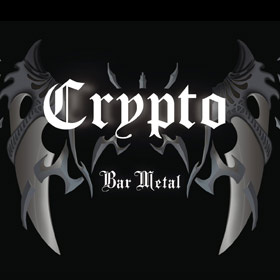
The reason why the NYDFS’s recent announcement could have a global impact is because it deals with whitelisting and blacklisting tokens and because crypto trading is a global phenomenon. Mass market crypto has so far come around on a four-year timetable, and it’s only during bull markets that centralized retail crypto lending, crypto credit cards, et cetera can sound like a good idea. Especially in the world of crypto, where all of the real use cases are essentially ungovernable and where all excitement takes place well outside of walled gardens like Coinbase and Gemini. The now shuttered Genesis Global Trading unit of CoinDesk sister company Genesis operated under the aegis of New York State, for instance, with seemingly no practical benefit.Įither way, measuring whether regulations are “worth the cost” is a futile act. Worse, despite the fact there are only 30-odd firms with a BitLicense, it doesn’t even have a 100% hit rate when it comes to protecting businesses and consumers.

wing of Bitstamp, aren’t exactly known for their major foothold in the New York or U.S. Licensees including exchanges like Xapo, bitFlyer and the U.S. These firms were barred from offering services in the state, and just anecdotally I know more than a few people who were attracted by the (now obvious) unsustainable interest rates, who are now thankful not to be a bankruptcy estate creditor.īut the highly restrictive Bitlicense system hasn’t always paid off, (even putting aside the hypothetical profits would be Celsius users might have seen riding the bubble up). It’s arguable the NYDFS has protected New Yorkers from countless crypto business failures and bankruptcies over the years, and especially during the year of pain in 2022 when now-defunct crypto lenders like Celsius and BlockFi imploded. – with many insiders thinking it set the pace for regulators to try to squeeze crypto inside the box of established rules, rather than address crypto’s particularities head on. But the collected bundle of rules, recommendations and guidance has been a major influence on the development of the digital asset industry in the U.S. It’s true the agency’s so-called BitLicense didn’t quite become the model for crypto oversight that its architect, the lawyer and former public servant Benjamin Lawsky, set out to achieve. Take just the NYDFS’ track record when bringing regulatory enforcements: a few of these cases have quite literally reshaped the industry, like in the case of Tether that reset the bar for stablecoin transparency. So too for crypto, in an interesting way and despite The Blockchain’s globalized nature (some might say “geographical decentralization,” but you don’t have to).

If you can make it here, you can make it anywhere.

Even in an increasingly globalized world, New York remains a main hub for economic activity and capital formation, and so the agency is a leading organization in setting reporting and communication standards that echo across the financial landscape. While “just” a state financial regulator, whatever the NYDFS does often makes an imprint worldwide.
Crypto bar update#
In short, the agency laid out three aims: set policy so NYDFS licensees are more proactive in assessing legal, reputational and market risks during the coin listing process, update the number of “greenlisted” coins (today limited to bitcoin, ether and stablecoins from PayPal and Gemini) and open a public comment period for industry participants to say their piece. My colleague Jack Schickler does a good job breaking down today’s announcements.
Crypto bar full#
You can subscribe to get the full newsletter here. This is an excerpt from The Node newsletter, a daily roundup of the most pivotal crypto news on CoinDesk and beyond.


 0 kommentar(er)
0 kommentar(er)
